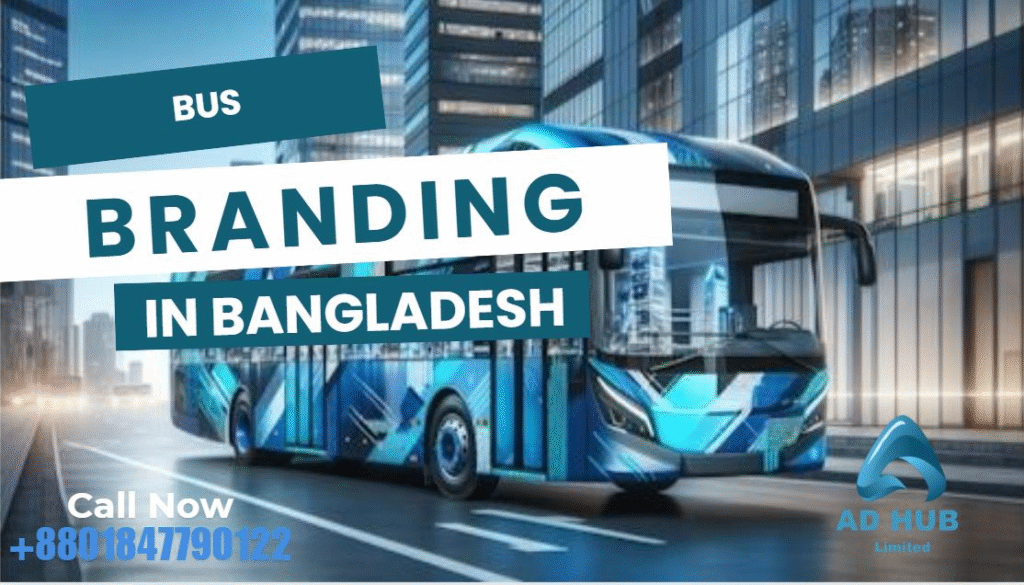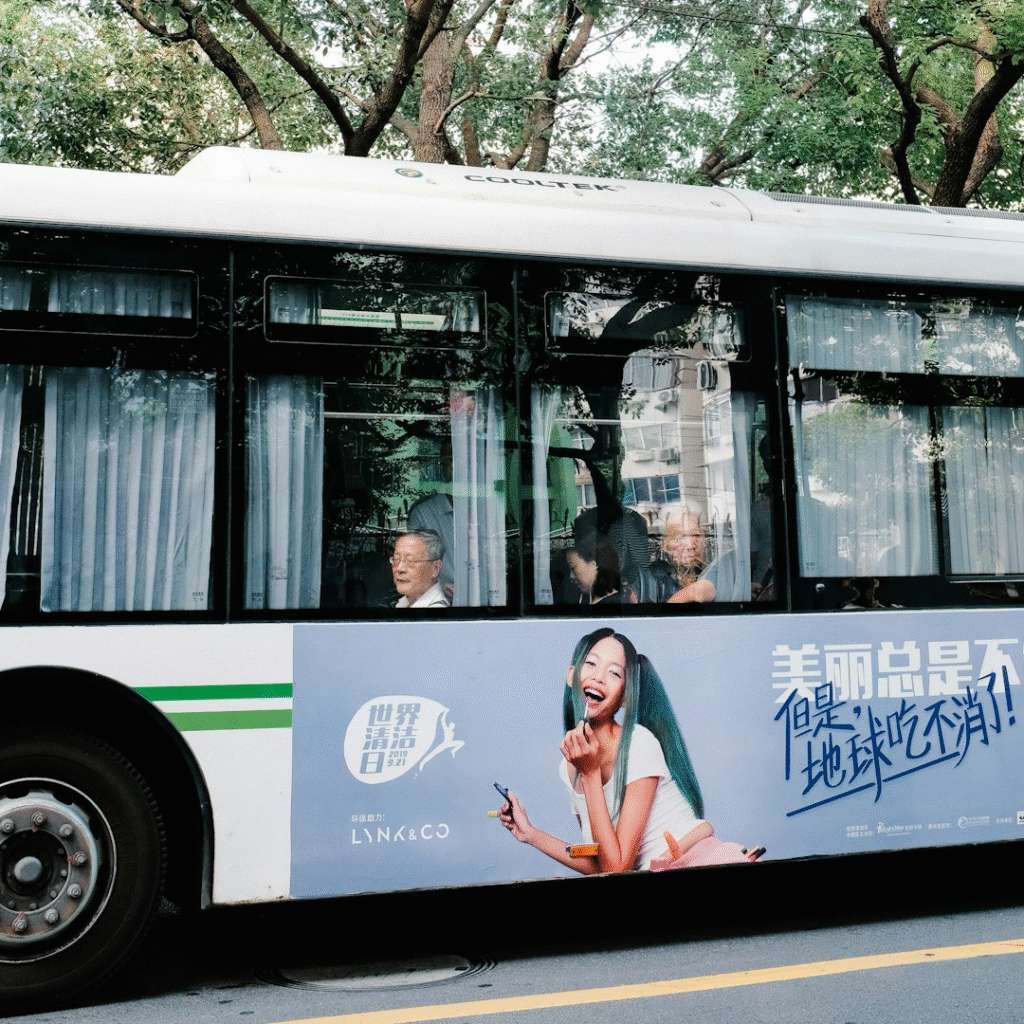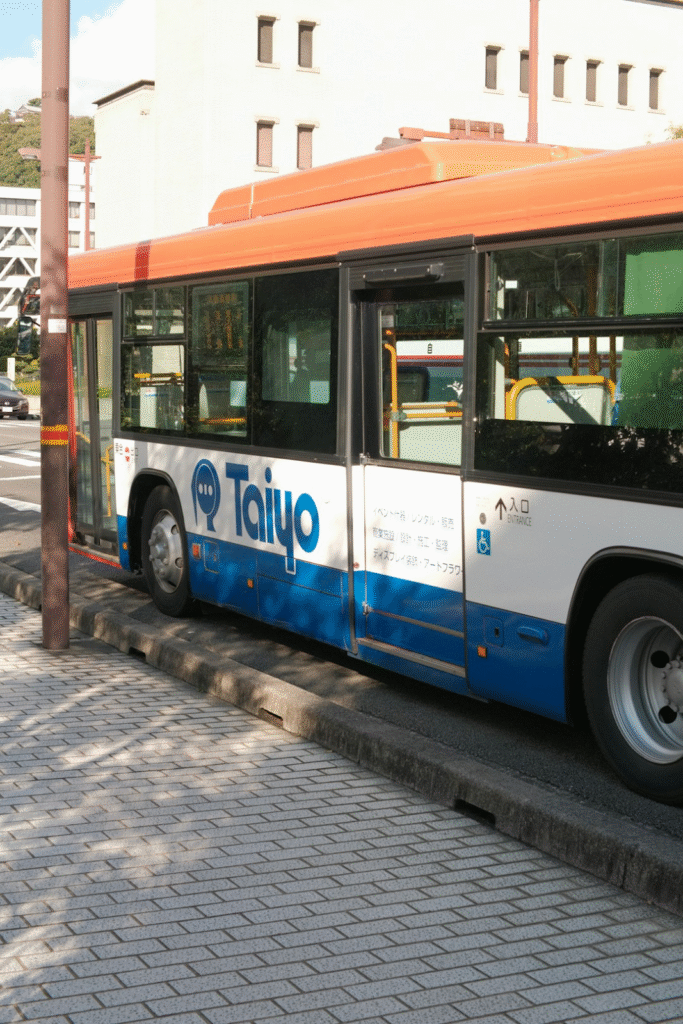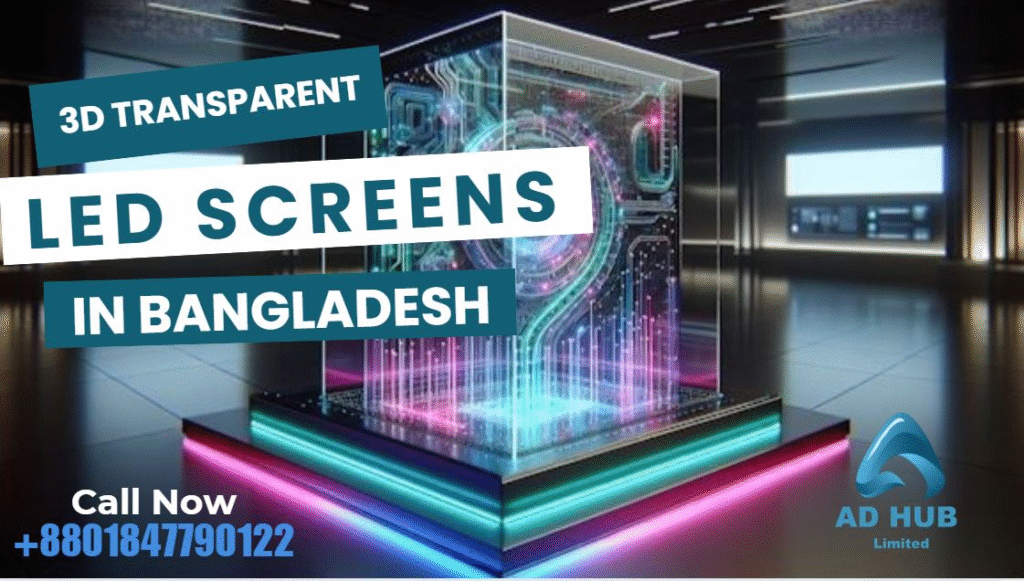
Introduce bus branding
Bus branding in Bangladesh has rapidly become a powerful way to communicate a message to thousands of daily viewers. We have seen how the right design, placed on the side of a city bus, can spark curiosity, drive sales, and boost a brand’s reputation. Ad Hub Bangladesh is one of the leaders in 360° advertising solutions in the region, and in our experience, bus ads strike a great balance between cost-effectiveness and daylong visibility.
We have all driven behind or alongside a bus that captivates us with bright colors or a witty tagline. Even if we only spend a few moments reading the ad, the memory often sticks. Researchers have found that consumers are much more attentive when they are outside their homes. One study presented by Moviamedia indicates attention can be 33% higher outdoors compared to inside environments. That means every time a bus travels down a busy street, it captures fresh eyeballs, each belonging to a potential new buyer.
Good news—this is simpler than it sounds. Bus branding uses the entire vehicle, partial panels, or interior spaces as an advertising canvas, giving businesses a chance to make an immediate impression. This approach is ideal for business owners, marketers, and advertising professionals who want to amplify a marketing campaign without blowing their entire budget. From local restaurants that want to reach new diners, to large telecom companies targeting the masses, bus wraps have proven their worth in many sectors.
At Ad Hub Bangladesh, we have found that bus ads offer more than standard billboard visibility because of the dynamic nature of moving vehicles. A billboard stays in place, but a bus can roll into different neighborhoods, business hubs, and suburban districts all in a single day. In this ultimate guide to bus branding, we will walk you through the fundamentals, the types of bus ads you can choose, the results you might expect, and how to craft a stellar campaign from scratch.
Appreciate the power of moving ads
We often think of digital channels for brand building and client acquisition, but physical spaces have not lost their charm. In fact, bus advertising can complement your broader ad mix nicely. Buses run through areas with heavy foot traffic, high-traffic roads, and, in many cases, routes that connect rural regions with urban centers. That means a single bus might carry your message to a wide mix of demographics, including students, office workers, shoppers, and travelers from out of town.
Here are a few reasons bus branding remains so influential:
- High visibility: Buses are large, easily noticed, and usually bright, which helps your advertisement pop. According to CashurDrive’s research, bus wraps traveling along busy roads ensure the ad is seen by pedestrians, commuters in cars, and even people looking out office windows (CashurDrive).
- Frequent repetition: Many of us see the same bus multiple times a week if we live or work near its route. This repetition can foster familiarity and trust in a brand. ACME Advertising CO. notes that a full-body wrap can generate thousands of daily impressions (ACME Advertising CO.).
- Diverse demographics: Bus routes aren’t limited to a single demographic. Passengers include office workers, entrepreneurs, students, and tourists. People walking by or driving adjacent roads also see the message. This broad coverage can mean a more diverse audience.
- Budget flexibility: Bus advertising can often be tailored to fit various budgets. Partial wraps, interior cards, or king panels on the exterior can be less costly than a full wrap—yet still deliver strong visibility. Research from Blue Line Media suggests that bus ads are among the most cost-effective media formats, often surpassing other options in return for every taka spent (Blue Line Media).
We see bus branding as a perfect match for local businesses or national-scale campaigns. When combined strategically with other efforts, like digital billboards in Bangladesh or brand activations, it creates a robust 360° presence that cements your brand in the minds of your audience.
Trace the timeline of bus advertising in Bangladesh
Before we jump into the nuances of designing a bus wrap, it helps to see where this medium began in Bangladesh. Historically, advertising on vehicles in the country started with simple text-based slogans, often painted by hand in the 1980s for government awareness campaigns. Early commercial advertisers, such as consumer goods companies, discovered they could reach bigger audiences by painting brand messages directly on bus surfaces. According to Best Ad Agency BD, the 1990s saw a surge in bus branding by telecom companies and banks, who wanted to break out of print-only advertising (Best Ad Agency BD).
These older efforts were basic, with plain text and minimal visuals. Over time, advanced printing methods arrived, bringing vinyl wraps that could handle Bangladesh’s weather and dust. Full wraps began to appear in Dhaka around the early 2000s, quickly making an impact by transforming large passenger buses into rolling billboards. Soon, partial wraps and side panels emerged as alternatives, letting marketers pick specific bus sections to highlight distinct messages or promotional details.
Today, thanks to companies like Ad Hub Bangladesh and other advertising agency partners, Vehicle branding offers a range of solutions. We can now print HD graphics that last years, choose routes based on demographics, and even integrate scannable codes for digital interactions. As the country’s infrastructure has grown, more bus routes exist, meaning your message can appear in both cosmopolitan areas and remote regions—perfect for bridging rural-urban divides.
Here’s a quick look at how far we’ve come:
- 1980s: Government-led messages on buses, mostly text-based health or civic duty campaigns.
- 1990s: Commercial advertisers begin painting direct brand messages. Consumer goods and telecom companies become early adopters.
- 2000s: Vinyl wraps and partial side panels appear, enabling bright, durable graphics.
- 2010s: Modern print capabilities lead to full bus wraps, partial wraps, and corporate endorsements. Strategic route planning ramps up.
- Present day: Eye-catching wraps, digital integration, and advanced targeting define bus branding, making it a vital part of Bangladesh’s bustling advertising landscape.
Choose your bus advertising format
Every bus campaign begins with choosing the right format. Do you want a full wrap that covers an entire bus or a simpler interior ad? Each format has specific benefits, and the best choice depends on your budget, target audience, and design ambitions. Below are the most common options:
Full bus wrap

A full wrap covers the vehicle’s entire exterior, often from nose to tail. It turns the bus into a massive, mobile billboard. According to Plug Talk Media, a single full wrap can deliver as many as 50,000 to 70,000 impressions per day in major metro areas (Plug Talk Media). This can be especially effective for big product launches or brand awareness pushes. The large canvas allows for bold graphics, strong color contrasts, and attention-grabbing taglines.
Partial wrap

If you want to save money or prefer a more minimalist design, a partial wrap covers a portion of the bus, like the side panels or the back. Some advertisers choose partial wraps to highlight a specific product or service. This can still produce solid visibility. According to CashurDrive, partial wraps reach a wide audience across busy neighborhoods, while costing less than a full wrap (CashurDrive).
Interior bus ads
Sometimes, the audience you want to target includes daily commuters spending significant time inside the bus. Interior ads, often placed near the ceiling or on seat backs, can engage a captive audience. Moviamedia notes that nearly 75% of consumers take action after seeing indoor transit ads, often by visiting a website mentioned in the ad (Moviamedia). These are very useful if you want direct website visits or phone calls.
Rear bus wraps and panels

Placing ads on the back of the bus is an option worth considering. They naturally grab the attention of vehicles queued behind the bus, especially in the city’s traffic. Rear panels can be ideal for displaying a succinct message or a memorable tagline that resonates with people stuck in traffic. According to Plug Talk Media, these ads are especially strong in high-density routes where cars frequently line up behind the bus (Plug Talk Media).
Whichever format you select, think carefully about the route the bus will take. A full wrap traveling only in industrial zones may not reach your intended market if you are hoping to attract college students. On the other hand, interior ads on a long-distance bus might fit your needs if your brand requires more captive reading time. We recommend chatting with your marketing team or an expert at Ad Hub Bangladesh to clarify route coverage, campaign length, and budget before locking in any deal.
Understand cost, ROI, and audience
One of the biggest concerns for marketers or small businesses is how much they will spend and whether that spend is worthwhile. From our experience, bus branding in Bangladesh is a practical solution that fits a variety of budgets. While prices can vary based on location, format, and how many buses you choose, you can compare bus advertising with other outdoor options, like an airport billboard or a banner ad, to see how it stacks up.
Typical pricing insights
- Location matters: Urban routes in Dhaka fetch higher rates than rural routes because they typically gain more views. As an example, Plug Talk Media estimates that a full bus wrap in a major city can range from $2,500 to $6,500 or more for a four-week campaign (Plug Talk Media).
- Format is crucial: Full wraps are pricier but deliver maximum coverage. Partial wraps and interior ads can be more affordable, helping advertisers stick to their budget.
- Duration influences total cost: Longer campaigns may offer better rates per month. Operating a wrap for at least three months is often recommended, especially when brand recall is key.
Potential returns
- Broader reach: A single bus can create thousands of impressions daily by moving through various neighborhoods. Best Ad Agency BD explains that each bus can outperform some traditional billboards in terms of daily brand impressions (Best Ad Agency BD).
- Creativity factor: Because buses are large and in motion, people tend to notice them. Even if your brand is relatively unknown, a catchy design can prompt passersby to look you up online.
- Tangible brand image boost: When people see a brand’s presence on a big bus, they often assume it is credible and growing. This perception can lead to higher trust and brand loyalty.
Identifying your audience
To maximize your return, it is wise to identify where your audience is and what they do. If you sell sports gear, placing ads on buses passing near stadiums, college campuses, or sports clubs makes sense. If you target families, choose routes that go through residential areas and near schools. Sometimes, a smaller route might deliver a more relevant audience than an extremely busy but less targeted path.
We know from experience that focusing your bus branding in the areas where your ideal customers reside, shop, or work can drastically improve your ROI. You can also synchronize your design to speak directly to that audience. A bus wrap that references local events or issues can resonate strongly in specific neighborhoods.
Strengthen your ad design
In bus branding, visuals make or break the campaign. The best bus ads boast high-impact graphics, minimal text, and a clear call to action. People usually have only a few seconds to glance at a bus, whether they are driving behind it or walking down the street. A cluttered design with too many colors or lengthy paragraphs can be ignored in a split second.
Below are a few crucial design tips:
- Use bold colors: A bright color scheme can stand out in traffic. The Moviamedia team noted that exterior bus ads often benefit from vivid hues and short copy (Moviamedia).
- Prioritize your logo: Ensure your logo is visible from multiple angles. Mentos once used a witty mascot on a bus to promote a new flavor, but the brand name was always carefully placed so that passersby could see it from both sides (Penji).
- Keep it simple: A tagline or short phrase works better than a long paragraph. Viewers rarely have enough time to read more than a few words. When we create bus wraps at Ad Hub Bangladesh, we urge clients to cut excess details and keep language direct.
- Apply relevant imagery: A single image that cleverly integrates with the bus shape or doors can capture curiosity. For example, National Geographic once used bus doors to show a shark “swallowing” a passenger. That creativity led to strong brand recall (Penji).
- Consider lighting and time of day: If your route is active at night, add reflective elements or well-lit backgrounds. Disney’s Aladdin bus ad effectively used multiple light sources to stay visible after sunset (Penji).
Taking a creative risk can pay off, especially if you can pair it with a digital campaign. For instance, you could encourage viewers to snap a photo and share it on social media for a small reward, bridging offline and online experiences in your marketing. For even bigger synergy, you might cross-promote on a 3d transparent led platform or finalize a broader out-of-home strategy that covers multiple mediums.
Plan a targeted campaign
Crafting an effective bus branding campaign goes beyond slapping a design on a vehicle. It requires planning, audience insights, and a willingness to adjust based on performance data. Below is a step-by-step approach we find helpful:
- Define your objectives
- Are you aiming to build brand awareness, promote a product launch, or drive sales at a local store? Your goal determines your message, creative design, and route selection.
- Understand your target audience
- Identify where your ideal customers live, work, and commute. Use route maps to align your ad with peak traffic times. If you specialize in consumer services, you may want to choose buses that pass through business districts during rush hours.
- Select the right format
- Decide on a full wrap, partial wrap, or interior branding based on your budget and messaging needs. For short-term promotions, partial wraps might be enough. For major push campaigns, full wraps often yield better brand recall.
- Collaborate with experts
- Speak with specialists who know the city’s transportation patterns. At Ad Hub Bangladesh, we compile route data, average daily ridership, and even local events that might affect bus congestion. This info helps you pick routes likely to deliver more impressions.
- Set clear timelines and budgets
- Clarify how long you want the wrap to remain on the bus. Keep an eye on monthly weather conditions and any city festivals that might increase foot traffic. Some clients prefer month-to-month campaigns, while others lock in six months for continued brand building.
- Monitor performance
- While exact metrics can be harder to track offline, you can tie bus ads to unique coupon codes or dedicated landing pages to evaluate interest. Some businesses see a jump in web traffic or store visits once the bus campaigns start rolling.
- Optimize and refine
- If a design is not delivering the expected results, adjust your visuals, message, or route. Just like digital ads, offline ads require ongoing evaluations for the best ROI.
Good news—this method is straightforward to execute once you have the right partners. We have guided numerous clients through the entire process of bus branding, from concept design to measuring final outcomes. When you plan methodically, success is far more likely.
Incorporate 360° synergy
Bus branding might be your campaign’s main attraction, but pairing it with complementary channels can magnify the results. For instance, if people see your bus ad and want to learn more, a quick online search might lead them to your business news page or your official profile. Aligning your offline bus ads with online content ensures audiences can seamlessly move from the physical realm to your digital channels.
Here are some ways to achieve a holistic advertising ecosystem:
- Coordinate visuals: Use the same color palette, fonts, and slogans across your bus wraps, social media profiles, and atl btl ttl _keywords strategies so people recognize your brand identity wherever they see it.
- Encourage immediate action: Include a scannable QR code or a simple URL on your bus wrap. Anyone with a smartphone can quickly navigate to your site for more details, product discounts, or special offers.
- Synchronize timing: Launch or refresh your bus ads at the same time you roll out updates to your digital campaigns in Bangladesh. If you are working on a brand activations event, tie it in with your bus branding to create buzz and drive foot traffic.
- Analyze cross-channel results: Monitor where your web traffic is coming from. If you see an uptick from local searches that coincide with the start of your bus campaign, it is a good sign your rolling billboard is making a difference.
We have also seen that bus ads pair well with large-scale solutions like digital billboards in Bangladesh. Running both can create repetition for key messages. Potential customers might see your bus wrap in traffic one day, then notice your digital billboard while running errands. That repetition can foster a sense of familiarity that nudges them to engage with your brand.
Summarize key points and next step
Bus branding in Bangladesh has come a long way from simple painted messages to vibrant, digitally printed visuals. The potential is huge whether you opt for a short-term product promo, a multi-month brand awareness push, or a local event highlight. As we have discussed:
- Buses roam busy routes, guaranteeing repeat exposure and a wide audience.
- Various wrap options—from full to partial—allow budget flexibility.
- Smart design choices (bold colors, legible fonts, minimal text) amplify impact.
- Targeted planning is key, including route selection and campaign duration.
- Integration with other marketing efforts maximizes brand recognition.
If you are ready to launch or scale up a bus branding campaign, we at Ad Hub Bangladesh can help you navigate the process, from designing the wrap to recommending the best routes. For bookings call +880 1847-790122. Bus advertising is not just about slapping a logo on a vehicle. It is about rolling into the heart of your audience’s daily life, sparking brand recognition everywhere, and seeing real results.
You have the data, the creative inspiration, and the practical steps. Now is the time to put it all in motion and watch your brand find new fans on the streets of Bangladesh. Let’s tailor a bus campaign that suits your unique goals and budget. We believe in the power of rolling billboards. There is no better time to give this strategy a spin—and experience firsthand how bus branding can drive meaningful growth for your business.
FAQs:


